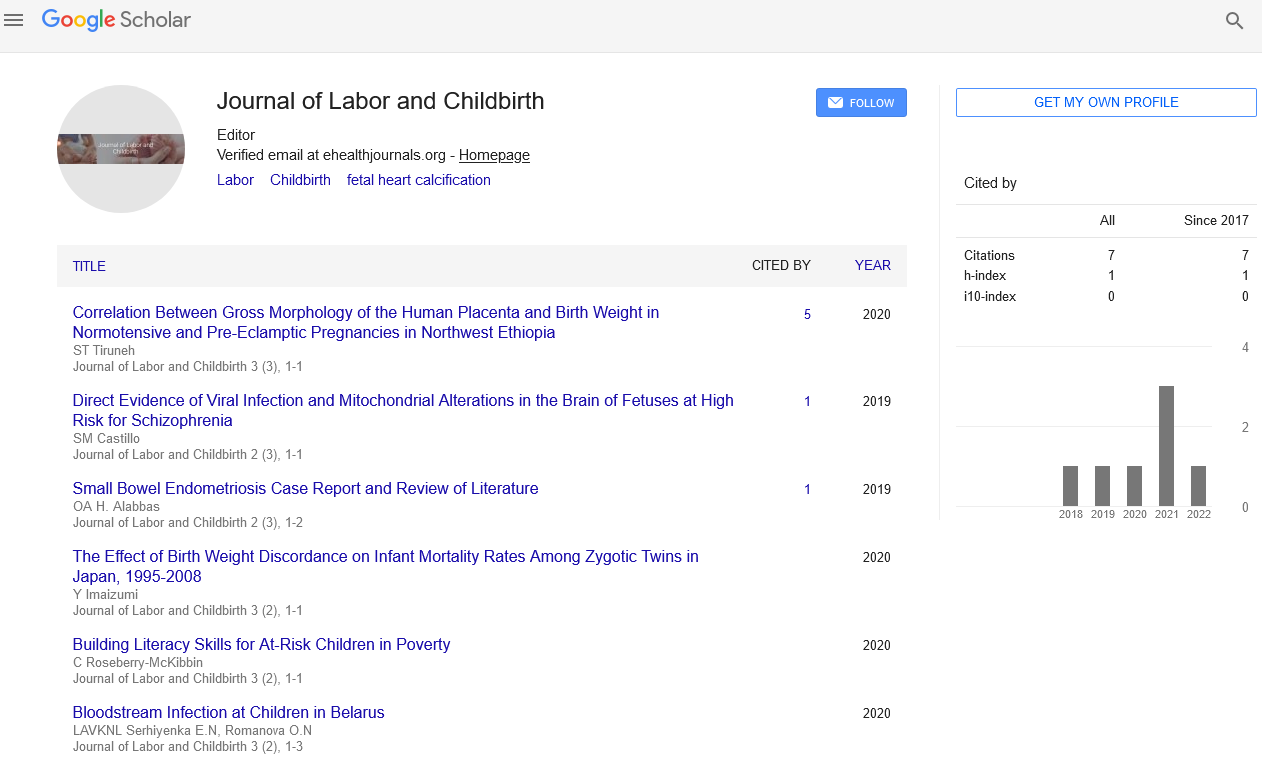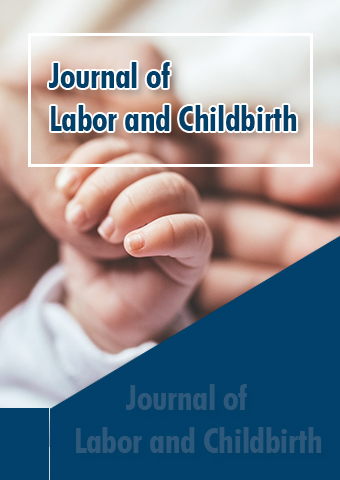Perspective - Journal of Labor and Childbirth (2023) Volume 6, Issue 5
Cesarean Delivery of a Women in a Critical Conditions
- Corresponding Author:
- David Riper
Department of Gynecology,
Mock University,
Austin,
United States
E-mail: davidriper@umn.edu
Received: 04-Sep-2023, Manuscript No. jlcb-23-118895; Editor assigned: 07-Sep-2023, PreQC No. jlcb-23-118895 (PQ); Reviewed: 21- Sep-2023, QC No. jlcb-23-118895; Revised: 03-Oct-2023, Manuscript No. jlcb-23-118895 (R); Published: 31-Oct-2023, DOI: 10.37532/ jlcb.2023.6(5).137-138
Introduction
Childbirth is a beautiful and transformative event in a woman’s life, but sometimes, circumstances arise that demand special medical intervention. In cases where a woman’s life or the life of her baby is in critical condition, a cesarean delivery, often referred to as a C-section, can be a life-saving procedure. This article explores the circumstances that may necessitate a critical C-section, the surgical procedure itself and the complexities that come with it. In critical conditions, the delicate balance between the health of the mother and the well-being of the baby becomes the ultimate priority.
Description
When critical conditions arise
A critical cesarean delivery is an extraordinary measure taken when the life of the mother, the fetus or both is seriously threatened. Various situations can lead to these dire circumstances and medical professionals must be prepared to respond swiftly and skillfully. Some of the critical conditions that may prompt a C-section include:
Placental abruption: Placental abruption is a condition in which the placenta detaches from the uterine wall before the baby is born. This can lead to heavy bleeding, endangering both the mother and the baby’s life.
Uterine rupture: When the uterine wall tears, it can cause extreme pain, bleeding and jeopardize the safety of both the mother and the fetus. Uterine rupture is more likely in cases of previous C-sections or other uterine surgeries.
Fetal distress: The baby’s heart rate may drop significantly during labor, indicating that the baby is in distress. If fetal distress is not resolved quickly, it can lead to brain damage or stillbirth.
Preeclampsia: This condition involves high blood pressure and damage to organs, usually the liver and kidneys, in the mother. In severe cases, preeclampsia can necessitate the immediate delivery of the baby.
Cord prolapse: When the umbilical cord slips through the cervix ahead of the baby, it can become compressed during contractions, reducing the baby’s oxygen supply. This is a life-threatening emergency that requires an immediate C-section.
Eclampsia: Eclampsia is a severe form of preeclampsia characterized by seizures. It poses significant risks to the mother and baby and often necessitates delivery.
Placenta previa: Placenta previa is a condition where the placenta partially or completely covers the cervix. This can cause severe bleeding, making a C-section the safest option.
Maternal health conditions: Some women have pre-existing health conditions, such as heart disease or diabetes, that can worsen during pregnancy. In such cases, a critical C-section may be required to protect the mother’s health.
The cesarean delivery procedure
A cesarean delivery is a surgical procedure in which the baby is delivered through an incision made in the mother’s abdomen and uterus. This procedure can be planned (elective) or unplanned (emergency) depending on the circumstances. In critical conditions, most C-sections are performed as emergencies to ensure the safety of the mother and baby.
The steps involved in a critical cesarean delivery typically include:
Preoperative preparation: The medical team will assess the mother’s and baby’s condition, conduct necessary blood tests and obtain informed consent. An anesthesiologist will administer anesthesia, typically spinal or epidural, to ensure the mother doesn’t feel pain during the procedure.
Incision: A horizontal incision is made just above the pubic bone to access the uterus. In some cases, a vertical incision may be necessary.
Uterine incision: The surgeon makes an incision in the uterus to access the baby. The type of uterine incision depends on the situation and the mother’s medical history.
Fetal extraction: The baby is carefully delivered through the uterine incision and the amniotic fluid is suctioned to clear the airways. The baby is then handed to the pediatric team for immediate evaluation and care.
Placental removal: The placenta is detached from the uterine wall and removed from the mother’s body.
Uterine closure: The surgeon carefully stitches the uterine incision, ensuring there is no bleeding or leaking of amniotic fluid.
Abdominal closure: The abdominal incision is stitched up in layers, closing the muscle and skin incisions.
Recovery and monitoring: The mother is moved to a recovery area where she is closely monitored. The baby is also under observation in the Neonatal Intensive Care Unit (NICU) if needed.
Risks and complications
While a critical cesarean delivery can be lifesaving, it is not without risks and complications. Some potential complications include:
Infection: Any surgical procedure carries a risk of infection. Proper sterile techniques and antibiotic prophylaxis are used to minimize this risk.
Hemorrhage: Heavy bleeding can occur during or after a C-section. The medical team must be prepared to address this promptly.
Surgical complications: The incisions made during the procedure may lead to complications like wound separation or infection.
Anesthesia complications: Anesthesia can cause allergic reactions, respiratory issues or other complications. An experienced anesthesiologist is crucial to minimize these risks.
Adverse neonatal outcomes: In cases of extreme prematurity or complications during the procedure, the baby may face health issues.
Extended recovery: C-section recovery typically takes longer than vaginal birth recovery. It may involve pain, discomfort and limited mobility.
Conclusion
Critical cesarean deliveries are high-stakes medical procedures that require exceptional skill and coordination. When a mother’s life or the life of her baby is in jeopardy, these surgeries become a lifeline to ensuring the well-being of both. Understanding the conditions that can necessitate a critical C-section, the procedure itself and the potential risks and emotional impact is essential for expectant mothers, families and healthcare professionals.
It is crucial to recognize that while a critical cesarean delivery can be a life-saving intervention, it is not the ideal way to bring a child into the world. In an ideal situation, a woman can give birth vaginally without complications. However, when critical conditions arise, modern medical advancements and skilled healthcare providers can help ensure the best possible outcome for mother and baby.

